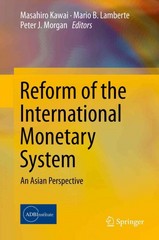Question
Working In Sweatpants May Be Over as Companies Contemplate the Great Office Return Andrea Hsu June 7, 2021 RACHEL MARTIN, HOST: When are we going
Working In Sweatpants May Be Over as Companies Contemplate the Great Office Return Andrea Hsu June 7, 2021 RACHEL MARTIN, HOST: When are we going back? And how many days a week do we have to be in? Those are questions many of us are asking as workplaces that went fully remote in the pandemic start bringing people back. As NPR's Andrea Hsu reports, there is no one-size-fits-all answer, and companies have a lot to weigh. ANDREA HSU, BYLINE: Outside his office building in downtown D.C., Greg Meyer is worried. He's the regional head for Brookfield Properties, a big commercial real estate company with office buildings all over the country. More than a year into the pandemic, things here are still fairly quiet. We peer in through the glass windows of a fast casual lunch spot called Leon, which catered to the office crowd. GREG MEYER: You could go in and buy an inexpensive lunch, and it was fantastic. And, you know, the pandemic put them out of business. HSU: Now with lots of people vaccinated and infection rates way down, Meyer believes businesses have a civic duty to bring workers back. MEYER: It's time now. We got to do everything we can to get people back as quickly as possible. HSU: A majority of his employees have been back in the office since last September - with no issues, he adds. They upgraded the air filters, wore masks and seated people in a checkerboard pattern. People came in every other day, a hybrid schedule. But after the summer, Meyer says, no more remote work. He wants everyone back full time. MEYER: We're in the office business. So if we don't believe in it, I don't think we can expect anyone else to. But, you know, equally importantly, we think it's a really important part of our success is - having people work together, teach each other, learn from each other, all those things which you really can't do remotely very well. HSU: According to a recent Gallup poll, close to half of full-time workers in the U.S. are still working remotely at least some of the time. Among white-collar workers, it's about 70%. In survey after survey, an overwhelming majority of workers say they want flexible work options to continue. To get an idea of
what a permanent hybrid setup might look like, walk into the offices of Creative Theory. They do marketing and consulting for companies like Google and Netflix. Its CEO is Tamon George. TAMON GEORGE: What's been really exciting is to see folks coming back into the office and wanting to be around other people. HSU: About a third of Creative Theory's 20-or-so employees are here today. Those who are comfortable coming in are coming in; those who aren't. And Tamon George is fine with that. He has no plans to require people to be here five days a week. The last year proved that people can get a lot done at home. GEORGE: I think a lot of people worked well with no distractions (laughter). But in terms of, like, what we think somebody would need to be around the table for - the good times, you know? If we can enjoy the work we do, celebrate together, share the wins together, you know, that counts. HSU: My next stop takes me to a company that has yet to return to the office at all. RENUKA IYER: This is it. HSU: Wow. Silent. Lights are off. IYER: Yes. HSU: I'm at the World Resources Institute with Renuka Iyer, the head of HR here. She says, normally, this place would have been buzzing with people IYER: Chatting, talking about what they found in the research, speaking passionately. We have a lot of passionate people. HSU: Their passion is the environment, and that's top of mind for Iyer as she contemplates the future. A smaller office would save energy; so would just having fewer people in the office. But Iyer knows a lot can be lost when you're not face-to-face with colleagues. She's already getting questions from staff, including from younger ones.
- Analyze the situation occurring.
- Which economic concepts are at play here?
- Apply economic theories and models to support your response.
Step by Step Solution
There are 3 Steps involved in it
Step: 1

Get Instant Access to Expert-Tailored Solutions
See step-by-step solutions with expert insights and AI powered tools for academic success
Step: 2

Step: 3

Ace Your Homework with AI
Get the answers you need in no time with our AI-driven, step-by-step assistance
Get Started


